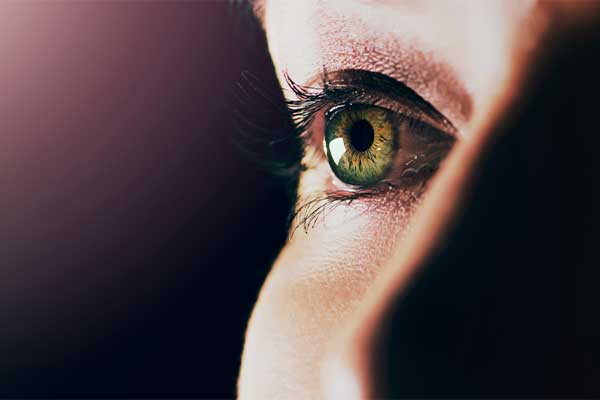This post is also available in:
![]()
![]()
![]()
![]()
![]()
![]()


Assessment Of The Tear Film Part 1
As soon as a contact lens is placed on to the eye, it is bathed in the already complex structure of the tear film. The ability of the tear film to maintain its integrity in the presence of a contact lens is crucial for successful contact lens wear
Tear film instability can lead to deficiencies in the lens/tear interface, and the wearer reporting symptoms of dryness and discomfort, which are arguably the most common reasons for contact lens drop out 1
The importance of the tear film in maintaining comfortable contact lens wear means that the contact lens practitioner must be able to carefully and accurately assess the tears, both before and during contact lens wear. This 3-part article will review the clinical examination of the tear film in contact lens practice.

The Tear Film
The tear film plays a multifunctional role in maintaining ocular surface health; it not only protects and moisturises the cornea, but also forms the first refractive surface for light entering the eye.2 It was previously believed that the tear film comprised of three distinct layers - a mucin, aqueous and a lipid layer.3 However, newer publications, such as the DEWS II Tear Film report,2 describe the tear film as a complex blended two layer structure, comprising of a mucoaqueous layer and an outer lipid layer (Figure 1).
This indicates that the mucin and aqueous layers are more of a continuum, with a higher concentration of mucin nearest to the ocular surface.3 It is currently understood that this complex continuum contains 20 types of mucins, approximately 1800 proteins and other essential components such as inflammatory markers, ions, salts and electrolytes.2 Each of the different components of the tear film plays an important role (Table 1); while the aqueous component provides hydration and flushes toxins, mucins bind to both lipid and water to help stabilise the tear film.
The outermost lipid layer, understood to comprise of at least 153 types of lipids, has the role of reducing evaporation and the surface tension of the thin film to avoid its collapse.2
Tear Film-Contact Lens Interactions
Modern soft contact lenses are estimated to be between 15-30 times thicker (Figure 2) than the average tear film and therefore when a contact lens is inserted on the eye and becomes bathed in the tear film, it is vital that this delicate structure is maintained.4
Material properties will undoubtedly play a part in the stability of the tear film, with different materials causing different interactions.
For example, silicone hydrogel materials tend to deposit more lipid and less protein compared to high water content, ionic hydrogels.5 Deposits, whether protein or lipid, can affect the wettability of the contact lens and have an impact on both comfort and vision over time,4 therefore the presence of deposits should be noted and managed.


Assessing the tear film
Assessing the tear film accurately is made challenging in that it is transparent, small in volume (approximately 8µl) and relatively thin (between 2-5.5µm).2 Additionally, the reflex nature of the tears is induced by the method of assessment which can affect results.
Assessment of the tear film in practice can be achieved through a variety of methods, however, consistent with many aspects of contact lens practice, the slit lamp remains the instrument predominantly used by practitioners. Its high magnification and excellent optics allow detailed observation of the structures and integrity of the tear film.
A keratometer, if available, can also be employed to assess tear stability by observing the clarity of the mires between blinks. With advances in dry eye diagnostic and treatment technology, more sophisticated instrumentation can be found in clinical practice which can provide invaluable information on
the tear film.
Whilst mainly adopted for dry eye management, their use for a detailed analysis of the tear film in contact lens practice should also be considered.
This article will consider techniques that can be easily fitted into routine eye examinations and contact lens appointments, whilst also considering the value of newer technology.
Tear film evaluation can be divided into two areas – assessment of tear quantity (volume) and tear quality (stability). Each shall be considered in turn.
References:
https://visionplusmag.com/j-j-references





